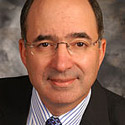04:55 PM
Rethinking Our Markets
While the crashes of 2001 and 2008 were bad, they pale in comparison to the damage done by the Flash Crash. While some blame circuit breaker alignment for the crash, others fault data volume and latency, and still others point at high-frequency traders pulling liquidity, the macro question remains: How do we create a market that doesn't fold under duress?
Sen. Ted Kaufman (D.-Del.) has come out with a very thoughtful response to the May 6 crash, proposing a nine-point plan that includes accelerating the SEC's market structure analysis and rule making, strengthening regulation of high-frequency firms, re-allocating market infrastructure cost based on message traffic, streamlining market data, centralizing and harmonizing market center rules, incentivizing deep markets over speed and tight spreads, eliminating payment for order flow and market center rebates, draining dark pools, and eliminating the ban on locked markets.
While I don't agree with all of the Senator's recommendations, he is clearly asking the right questions. How do we make the public markets safer, more stable and less volatile, especially during periods of high volatility when natural liquidity is scarce? The goal is to build a market that allows investor orders to interact in a non-intermediated way, that provides liquidity when needed and that allows investors of all stripes to trade fairly.
Today we have a fragmented structure where the markets are fast. Orders that can naturally match are intercepted by the speedy. Larger orders hide in dark pools. Market-maker liquidity is temporal, and algorithmic machines are the only way to safely trade.
So What Should We Do?
To start, there are too many places to trade. While breaking up the NYSE/Nasdaq duopoly was good, we have taken it to the extreme. Fragmentation must slow or go backward. We should start capping exchange and ATS licenses and provide incentives for existing ones to be retired. To reduce dark pools and internalization, one solution is to change the pricing of printing non-exchange-matched orders to the tape. If printing becomes more expensive than matching, maybe exchanges become the first choice to trade rather than the last choice.
Second, we need to rethink liquidity provisioning. Liquidity providers cannot be fly-by-night players. Liquidity providers should be market makers that are held to a higher standard. They also should be backed by greater amounts of capital. Maybe their capital should be allocated based on how many messages they send in conjunction with their end-of-day position?
In addition, incentives need to be restructured. Currently there are few market-maker incentives. In fact, there are more market-maker penalties than benefits. This doesn't help when you need market makers to actually provide liquidity. Maybe we should provide incentives for liquidity provisioning, such as limited colocation access, discounted fees or reduced clearing rates. And while we are at it, maybe there also should be penalties for intermediating flow that can cross naturally? It sounds good, but calculating this would be challenging, at best.
To keep track, the SEC needs to better monitor market activity. But instead of a $4 billion audit trail (the proposed Consolidated Audit Trail, or CAT) built over three years, we should think of a more prudent alternative - something that costs no more than 10 percent of the proposed budget and that would be available with little delay and less implementation risk.
If we penalize easy liquidity provisioning and make it harder to hide in the dark, then we need to make the markets safer for larger orders. If anyone can see a large order and penny it, then maybe we need to eliminate depth-of-book or pre-trade volume transparency? Or maybe only regulated market makers should have access to this information? But that harkens back to the days when specialists had informational advantage over customers, and that wasn't good, either.
While most of these ideas are hare-brained, we need to start thinking out of the box. And while I don't agree with all of Sen. Kaufman's proposals, I applaud him for spending the time, doing his homework and putting together a well-reasoned plan.
Larry Tabb is the founder and CEO of TABB Group, the financial markets' research and strategic advisory firm focused exclusively on capital markets. Founded in 2003 and based on the interview-based research methodology of "first-person knowledge" he developed, TABB Group ... View Full Bio



























